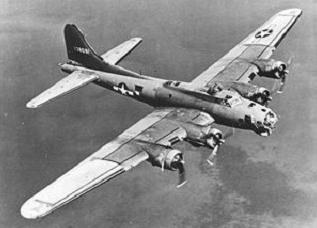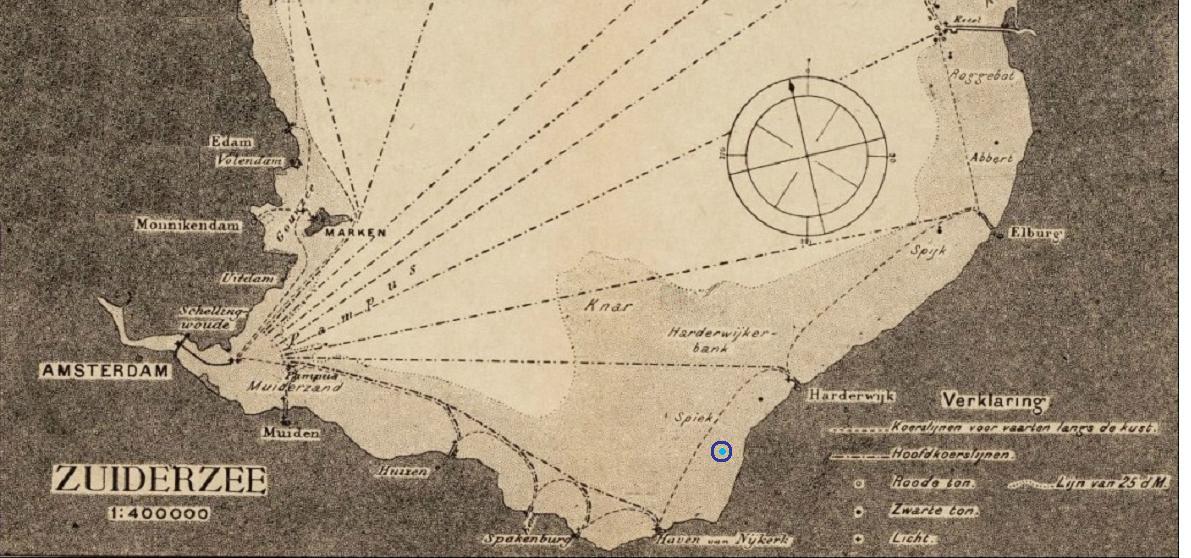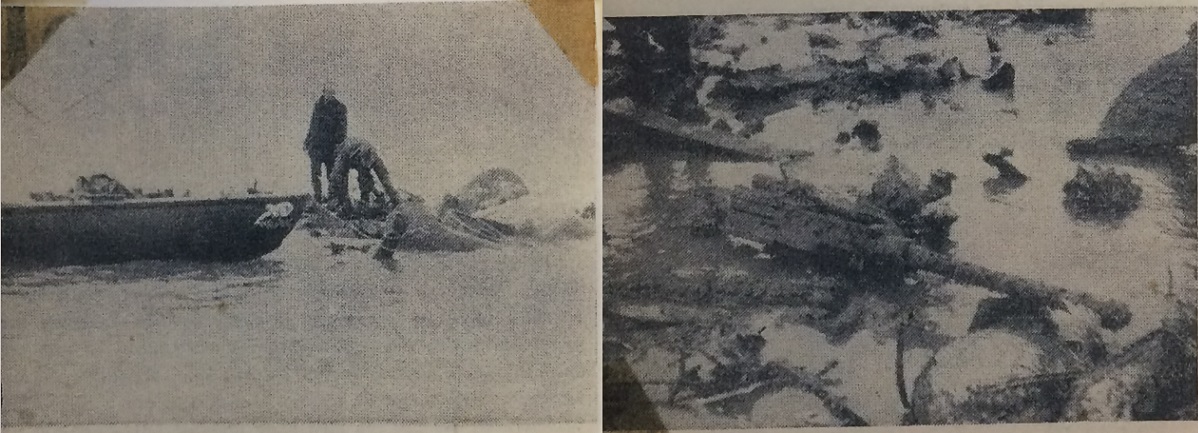| Date: 1944 Feb 21/21 | A/C Type: B-17G SH (Radar) PFF | SN: 42-30280 | Code: MI- | A/C Nickname: Crazy Horse |  |
|||||
| File: 164 | Airforce: USAAF | Sqn/Unit: 482 BG - 812 FS | Mission/Raid: Diepholz | |||||||
| 1 | Pilot | 1Lt. Ralph W. Holcombe KIA, buried Amersfoort | 8 | Bomb. | 2Lt. William H. Barret jail, Amsterdam | |||||
| 2 | Co-pilot | 2Lt. John W. Baber POW | 9 | RWG | S/Sgt. Bryce W. Long jail, Amsterdam | |||||
| 3 | Nav. | 1Lt. Edward H. Horner POW | ||||||||
| 4 | Eng. | T/Sgt. Thomas D. Kennedy POW | 10 | Extra Co-P | Captain Gerald D. Binks evd, Liege (POW) | |||||
| 5 | RO | S/Sgt. Steven F. Martin POW | 11 | Radar op. | 1Lt. Charles A. Haupt evd, Liege | |||||
| 6 | BTG | S/Sgt. Henry Reamer Jr. POW | 12 | Radar/Nav | 2Lt. Joel D. Punches evd, Liege | |||||
| 7 | TG | S/Sgt. William M. Blake POW | 13 | LWG | S/Sgt. Harold M. Booth evd, Liege | |||||
Flak shot two engines out over Diepholz. Flew over Osnabrück in direction west back to the UK, losing height. Over Holland, north-edge of Apeldoorn crew started to jump out. Pilot Holcombe held the aircraft level for them. At the Lake IJsselmeer (Old Zuyder Sea) shoreline the bomber dove into shallow water at Horst (Between Nijkerk & Harderwijk, at Ermelo), 1km from shore. Holcombe washed ashore 2 months later. Other crew OK. |
||||||||||
The Horst
The wreck of the bomber was initially visible in the water because it came down on a sand-ridge named 'Spiek', with only 1,20 meter of water there (4 ft). This was right in front of 'the Horst', a German light FLAK training range (13mm, 20mm and 37mm). They used this stretch of water to shoot on floating targets pulled by small tugboats. Near the wreck it was too shallow for a large recovery ship (as the German BP36), therefore the wreck of the B-17 was not recovered, as was the standard German procedure (to harvest the scrap metal). They must have removed some of the wreck with smaller boats, run it flat, shot it up (target practice) or demolished it with explosives to get their firing range clear again, because the wreck was smashed further, stripped and went under water. That action, or the thawing of the winter-ice, may have caused that the body of pilot Holcombe was released from the wreck.
According to research by Mr. Cees Steijger, author of the book on B-17 42-30280 'Crazy Horse', Lt. Holcombe's body was recovered after two months, on 28 April 1944 by fisherman Tijmen de Graaf, 8km from the Nijkerk coast. That is only 1km from the crash position on 21 Feb. 1944. The fisherman brought the body (with dog tags in the brest-pocket of his flying overall) to his home port Spakenburg. From Spakenburg bodies were buried in Amersfoort (Leusden-Zuid, Rusthof). We have Lt. Holcombe's burial date in Amersfoort on May 3, 1944.
After the German demolish-actions, the flat remains of the bomber were not visible anymore in the murky water. Away from the shipping lanes, on a shallow spot that was avoided by boats, the wreck site was forgotten. It probably became a seaweed bank. Direct after the war in May 1945, fishermen went after the abundant fish in this former restricted military firing range zone and lost some nets on the wreck. But they had to leave the area in 1946 (at least during daylight) when the Dutch Army took over the German installations on 'The Horst'. It was re-used as a .50 caliber practice range until 1964. The Horst is now a highway-exit on the A28 at Ermelo and a beach. Two German bunkers are still visible.

.

Wet reconnaissance 1968
The sea here was diked in 1965 (polder named 'South-Flevoland') and in 1967 the water was pumped out. Some items of the wreck came in view and then the location was marked (a cross with No. 145) on the sea map for the first time. In 1968 the water level became low and the Dutch Airforce Recovery Team (Mr. Gerrit Zwanenburg) went to the location with a small rowing boat and was able to walk around the circular debris-field and could identify it with help of the USAAF thanks to an engine-number. On the sea map the wreck-location no. 145 received a circle around the cross meaning 'identified'. The photos of this year 1967 show the rowing boat (the 'Moby'), two men inspecting the site (Van de Graaf and Zwanenburg), an upright standing propeller-blade, two damaged tires, photos of tire-profile, a flat laying .50 cal. Browning machine gun with muzzle-flame deflector and a wooden sign in the water stating 'Gevaarlijk - Explosieven' ('Danger - Explosives'). This frail sign regulary fell over.

Dry recovery 1970
Two years later in 1970 before and during the full (dry) recovery, photos show the same items in the wet sand or later in dry land. A small aluminum plate with '42-30280' was found. The excavation was finished 23 August 1970. Today the crash site is located in a forrest near the RCN-Bungalowpark, Dasselaarweg, Zeewolde. A monument was reveled in 2019 there to commemorate Lt. Holcombe and the crew of two other aircraft crashed nearby.

Pilot 1Lt. Ralph W. Holcombe
In the last minutes of the flight, a crew member came up to Holcombe in the cockpit and asked about 'the bailin out'. Holcombe shouted back: "Get the hell out!" (MACR). After two months (28 April 1944) Holcombe washed ashore (or brought in recovered by a boat) in Spakenburg, 11km southwest of the crash location. Bunschoten-Spakenburg meant burial in the Allied Plot in the Amersfoort-Leusden Zuid 'Rusthof' Cemetery. Holcombe was buried there on 3rd of May 1944. Exhumed by an US Quartermaster Grave Recovery team on 11 March 1946 and reburied in US Centralization War Cemetery "Netherlands" in Margraten near Maastricht. He rests there today in plot H, row 16, grave 4. He is commemorated on the monument at the crash location in Zeewolde.
2Lt. Barret and Sgt. Long
Barret and Long saw each other back in a (civil) jail in Amsterdam, being arrested by the Germans near where they jumped and brought to Amsterdam for first interrogation. Sgt. Long had broken his ankle in the parachute jump. We believe that all POW of this crew were taken to Amsterdam after capture and from there were moved by train to Oberursel (Frankfurt) for more thorough interrogation. Co-Pilot 2Lt. John W. Baber stated later that he saw Sgt. Kennedy, Blake and Martin at the DuLag in Frankfurt.
The four evadees.
They were lucky to have parachuted in wooded area around Uddel and Ermelo. Lt. Charles A. Haupt (Queens, NY) landed in a tree and could trade some clothes with people he came across. He felt confident enough to go into a small rural Dutch store to buy some food and drink. But the clients stared at him and the man behind the counter asked "are you a German officer?". Haupt sensed trouble and replied loudly "Jawohl". Outside he went around a corner and ran for some time.
All four were helped by Dutch civilians and eventually the Dutch underground set them on the first leg of the the escape line to Spain. The assembly and start point of that line was in Brussels (Belgium) and the difficulty for the Dutch helpers was to get them there. The journey to Brussels was very dangerous and could take weeks or months.
From the location in the Netherlands (250 km north of Brussels) they were put on trains via Arnhem, Amersfoort and Eindhoven. Punches had a false ID as Dutch druggist from Amsterdam (chemist/drug store owner). East of Eindhoven their names were recorded in the (famous) safehouse farm 'De Zwarte Plak' (Poels family), situated in a hamlet named... America. Via safehouses in Venlo and Roermond they crossed the Dutch/Belgium border over the Maas-river at Maaseik. Through East-Belgium where they were moved south via Neeroeteren and Maasmechelen to Luik (Liège), still far from Brussels. On the 27th of May 1944, Captain Gerald Binks was arrested in Liege and became POW (German arrest documents are in the MACR). Because of the Normandy invasion on June 6th 1944, Punches, Booth and Haupt could not reach Brussels anymore and had to stay in Liege were they were liberated by US-troops in September 1944.
The discovery of the wreck in 1968
The next 9 photos: RIJP, Potuyt. Below: 8 January 1968. The huge dike-circle was closed and water pumped out. Birth of polder South-Flevoland. Note the crane in the distance and the shadow of photographer Mr. Potuyt of the left.

The tractor is delivering or collecting 55 gallon oil drums.

Wooden rib of a ship. 
The crane is covering the sides of the dike with heavy clay.

The pumps are working for a year now and the water (4 to 10 feet) is almost out.

12 March 1968. In the distance two feet water is still present. A wreck emerges. The remains of B-17 'Crazy Horse' (unknown at that time).

A month later, 12 April 1968. Same view as above. The wreck is the back debris on the strech of sand.

Below. End April 1968. The twiggy sign 'Danger, Explosives' did not keep enthousiasts away. Crane in the distance still working. In the sand on the left, a flat laying Wright Cyclone R-1820 nine cylinder engine. The propeller is a meter away from the engine. Nose cone of the propeller is facing up and the propeller-blade is not pulled upright yet. On the right two tyres. It is clear not the whole B-17 is here. Recoveries by small boats took large parts away.

2019. Below. Presentation by Mr. Bert Wijs about his father's encounter with the wreck site in April/May 1968. Photo album on the wall.

Photo album Wijs. These images were taken during the presentation.

Photo album Wijs.

News paper article March 1968 showing Dutch Airforce recon the wreck site. Boat Moby with Sgt-Major van de Graaf and Gerrit Zwanenburg.

.

The nose cone and propeller blade now elevated.

Display in city hall Zeewolde.

On the below image, the tractor is still riding up and down, pulling cargo.

Another visitor in 1968, Mr. Evert van de Brink. The same Wright Cyclone R-1820. Note the loose piston head, in 2019 part of the Zeewolde display.

Photos in Nijkerk Museum.

.

Summer 1968.

Summer 1968.

In the British TV-documentary 'Some of our Airmen are not longer Missing' (1978) Mr. Gerrit Zwanenburg is followed by camera for some years. At some point in the documentary (time: minute 16:00 to 17:00) he is walking with a bomb-locator through green bushes towards a wreck. This is year 1971 and the wreck is no doubt this B-17 42-30280. Documentary: https://www.youtube.com/watch?v=gTpAXE4WIJM&list=PLFAA96C8A4CD6DD45
Dutch Army Grave- & Identifcation Sgt-Major Arie van de Graaf and recovery officer Gerrit Zwanenburg (with cap) on the site in August 1970. The sand of former sandbank 'Spiek' is well visible. The .50 cal. cartridge belt is from the wreck. Most spent bullet heads found here originated 1942-1964, when the sea here was a shooting range.

Sources
- MACR
- Flight log of crew member 2Lt. Joel D. Punches, typed on his base in England Sept. 1943 until 21 Feb. 1944 (his above 25th mission) and his post war letter.
Spoken version this Flight log on YouTube: https://www.youtube.com/watch?v=vfmU7XeitNA
- Book 'In de schaduw van de glorie' by Mr. S.L. Veenstra (RNLAF), 1992.
- Book 'Vriend and Vijand' Memoires Mr. Bert Poels, 1977.
- Newpaper articles 1967-1970
- IJsselmeer recovery map collection ZZairwar
- Photos remaining German bunkers on the Horst: http://www.bunkerinfo.nl/2013/01/schietbaan-horst-1.html
- website Zeeschouw BU
- RIJP, photos Mr. Potuyt.
- Museum Nijkerk, photos Mr. van den Brink.
- Book presentation Crazy Horse in Zeewolde, exhibition display, photos of Mr. Bert Wijs.
- Book 'Crazy Horse' on B-17 Flying Fortress 42-30280. By Cees Steijger, 2019.
© ZZairwar (Zuyder Zee Air War)